The Battle of the Somme [Part 2]: contemporary sources
On the 100th anniversary of the Battle of the Somme we take a look at the contemporary sources available in the Information and Reference Library. We examine how The Times reported the end of the campaign and how it was covered in the pages of The Illustrated London News and Punch.
The final battle of the Somme offensive was the Battle of the Ancre which ended on Saturday 18 November when the Fifth Army advanced north and south of Ancre and the 51st (Highland) Division secured Beaumont-Hamel.
The Times covered the war, on all its fronts, in great detail, using material from its own correspondents in the field. The paper also reported official dispatches from the General Headquarters in France, and elsewhere, and the official communiques from Berlin that were supplied by Reuters*. The correspondents were restricted in what they could write (see The Battle of the Somme: contemporary sources-Part 1). The dispatches and communiques from both sides were propaganda tools, giving a distorted view of the truth in an effort to keep up morale and hide operational information.
Material was received by electronic telegraph** and newspapers printed overnight for sale the following morning, just as they are today. Different editions were published, with the final or late edition (the last one printed) containing the most up-to-date news.

On Friday 17 November, The Times contained dispatches from the previous day about the progress in the battle for Ancre which it updated in the Saturday edition.
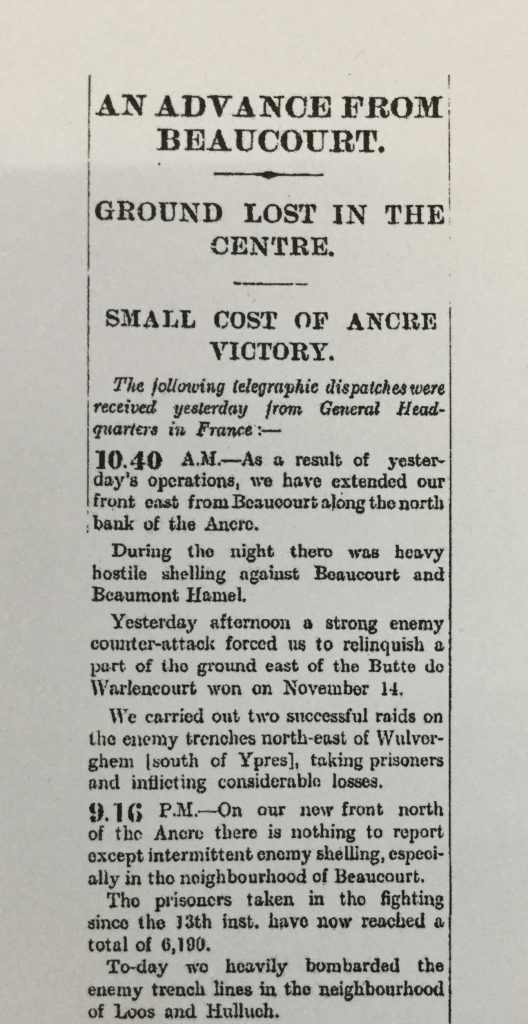
On Monday 20 November the paper reported the capture of Monastir and the advance on the Ancre, with another article reporting a visit to the battlefield. Under the headline Further British Advance dispatches from General Headquarters were reported. Below it was given a communique from Berlin, dated Sunday 19 November, which spoke of a “sanguinary defeat for the British, and secured them a gain of terrain at only a few points”. This method of contrasting the British reports from HQ and communiques from Berlin was common practice.
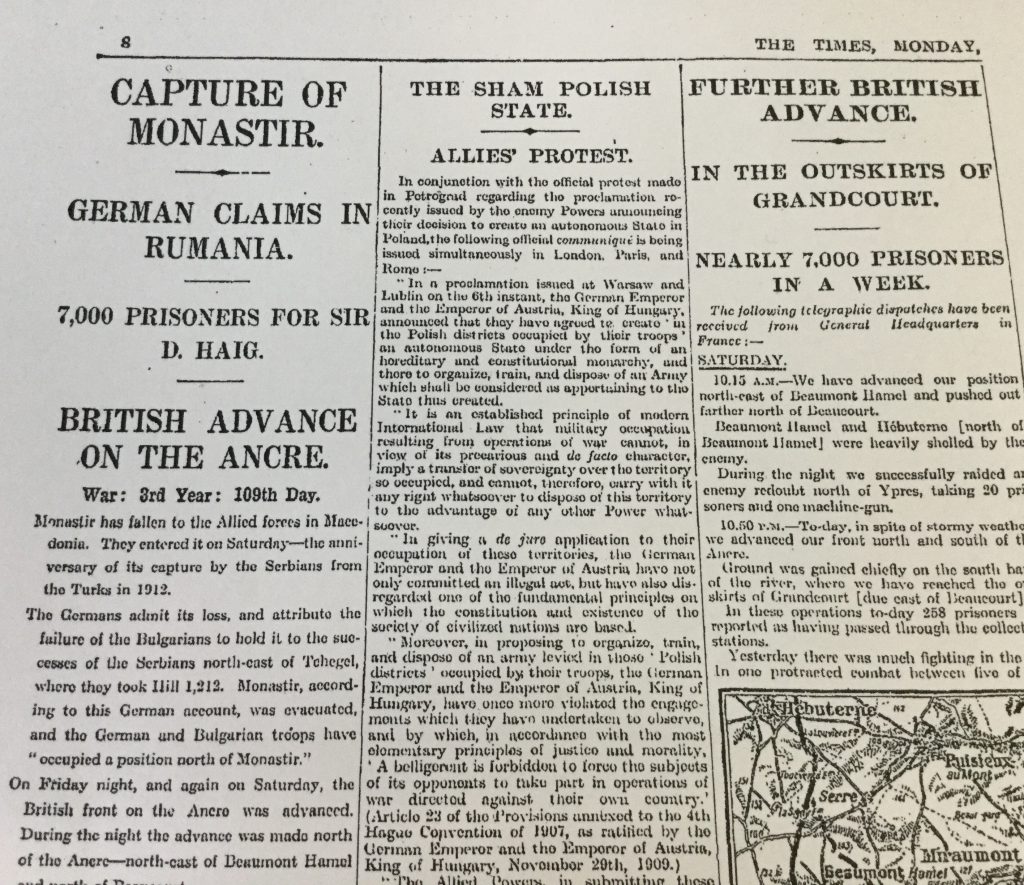
Illustrated London News
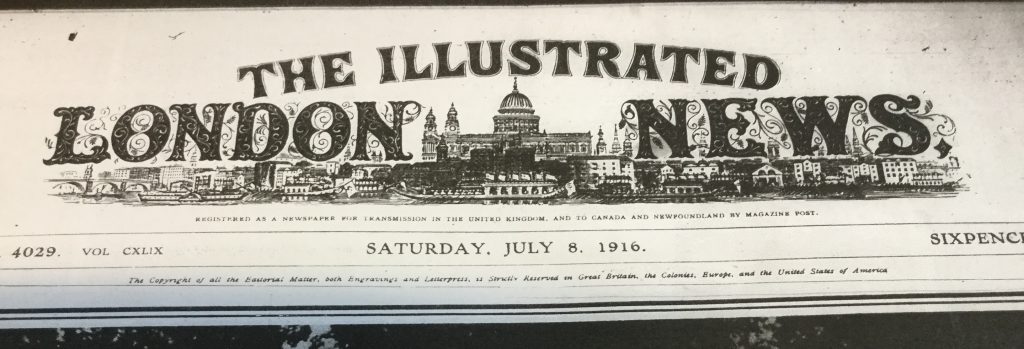
The Illustrated London News, much like Picture Post in the twentieth century, was a groundbreaking publication when it was first published in 1842 as it was the first illustrated weekly newspaper.
In the 1840s illustrations were printed from wood engravings so that producing them was very labour intensive. An artist would draw an illustration, which would then be transferred onto a wooden block by a draughtsman (in reverse, using a mirror), and then an engraver produced the final block, from which the illustration was printed. This all had to be carried out swiftly to ensure that the newspaper was topical. Technology stepped in and this process was later replaced by offset lithography and photoengraving. Photography became the main pictorial source for the newspaper but illustrations could still be used to good effect to show the drama of a situation.
The publishing schedule of a weekly newspaper could accommodate the delay in receiving and developing the photographic film the front line which was less suitable for daily newspapers. It wasn’t until the 1920s, when developments in cameras and printing technology, and of telephotography – a process whereby photographs could be transmitted by telegraph – enabled the widespread use of photography in magazines and newspapers.
The Illustrated London News contained articles, as well as illustrations and photographs, but it was the pictorial content which powerfully conveyed the atmosphere, heroism and drama of the battlefield.
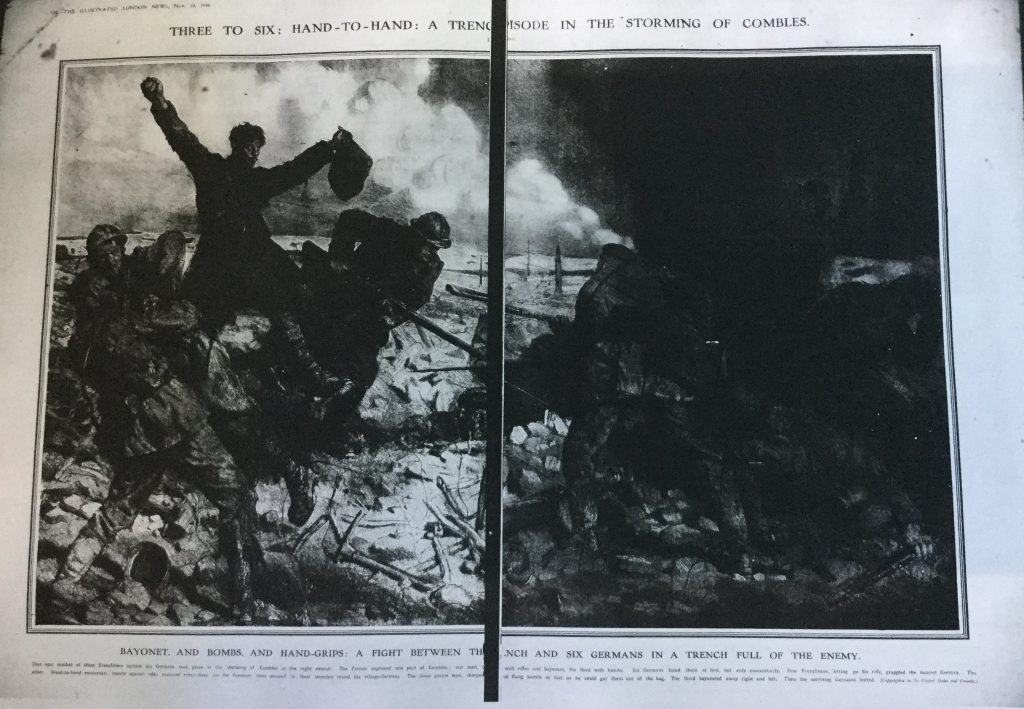
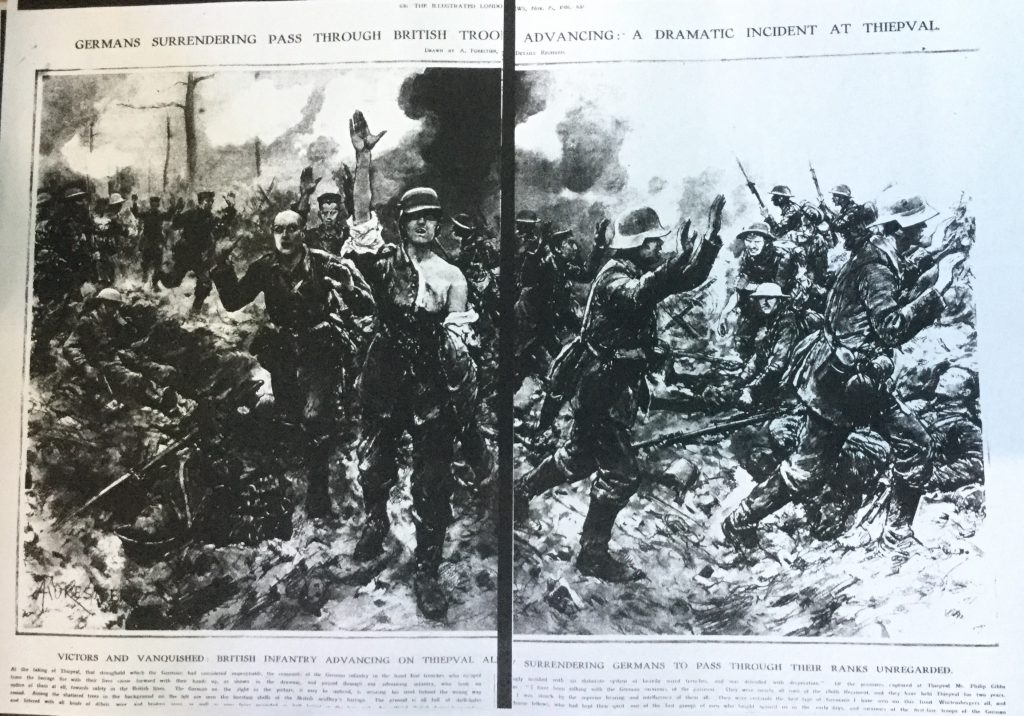
The two illustrations above show how composition and tone (and possibly some artistic licence) could be used to highlight the chaos of the battle and give it the atmosphere of the battlefield. In contrast, the photograph used on the cover below has none of the drama or emotional depth of the illustrations.
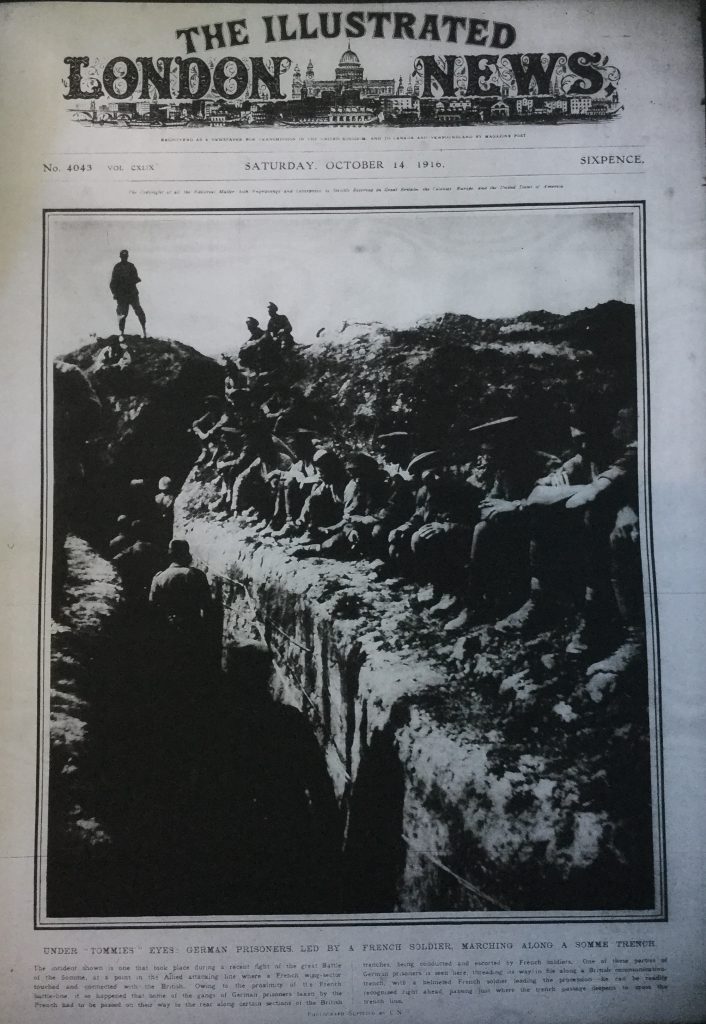
Punch
Punch, the humorous and satirical magazine, which was first published in 1841, used its pages to bring cheer to its readers and to keep up morale through articles and cartoons. (The original use of the word cartoon meant a full-sized drawing for a design or painting but it was its use by Punch in 1843 that led to its modern meaning). The Punch cartoonists poked fun at the enemy, as in this cartoon depicting a Prussian domestic scene.
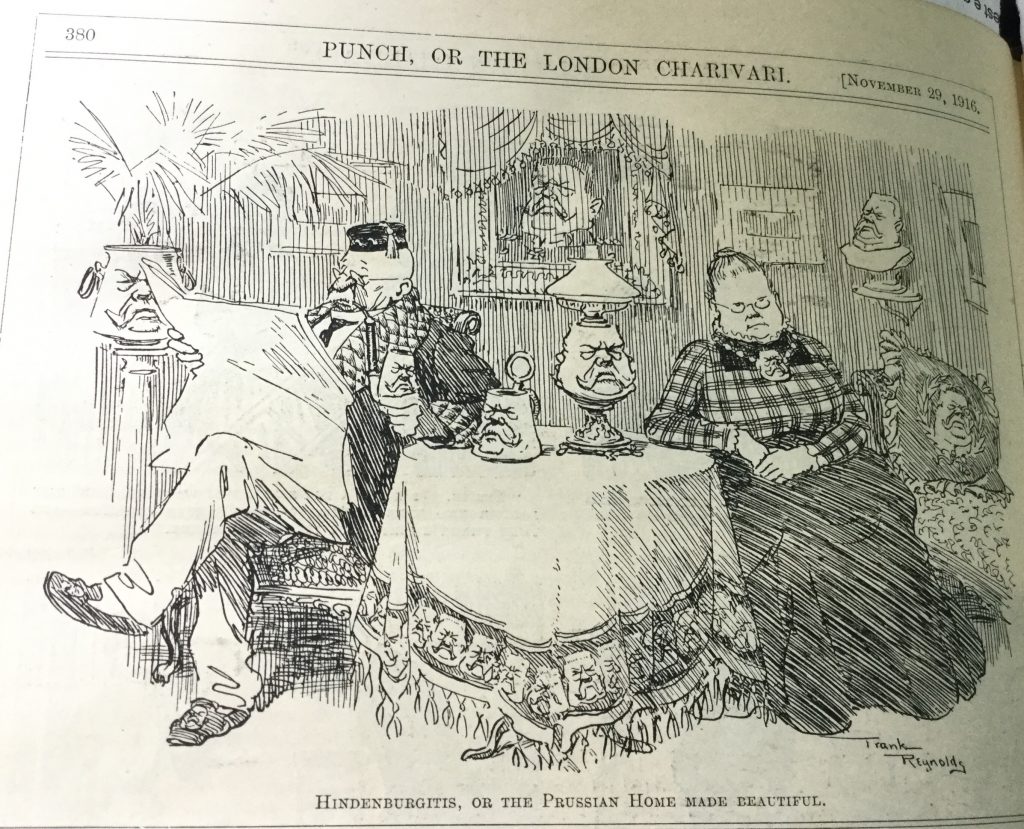
(The Prussian, Paul von Hindenburgh, was appointed field marshal and commander of all German land forces in 1914. He was very popular with the German people, became a war hero and, in 1925, was elected President of Germany.)
Other favourite Punch targets included the Government and the Civil Service …
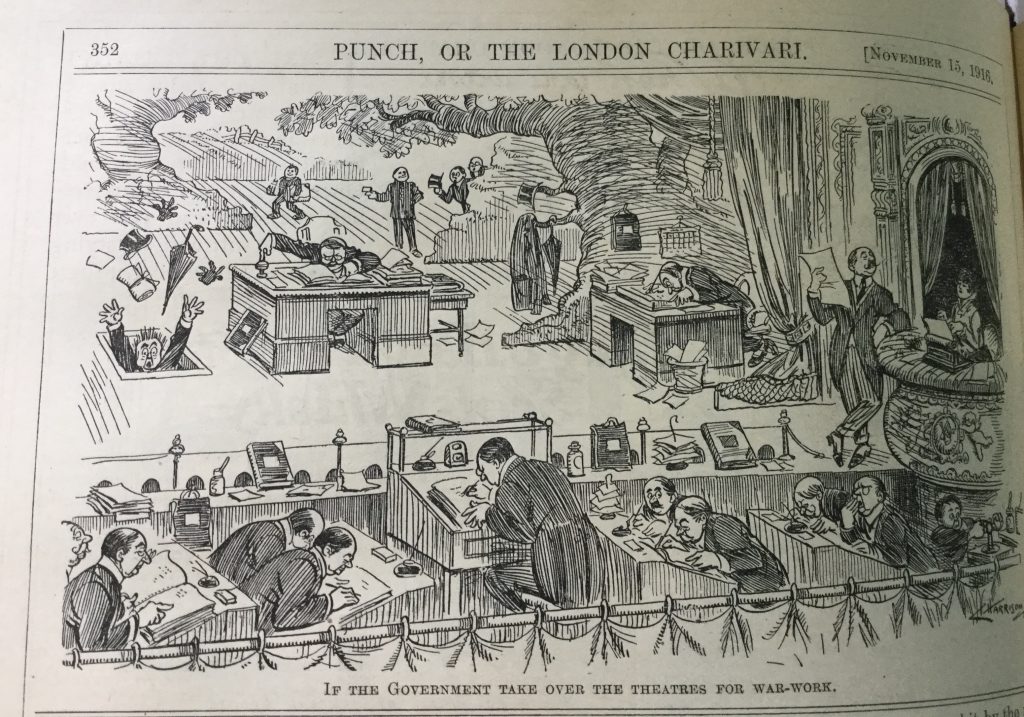
… And included the soldiers both in the trenches …

… and in hospital.
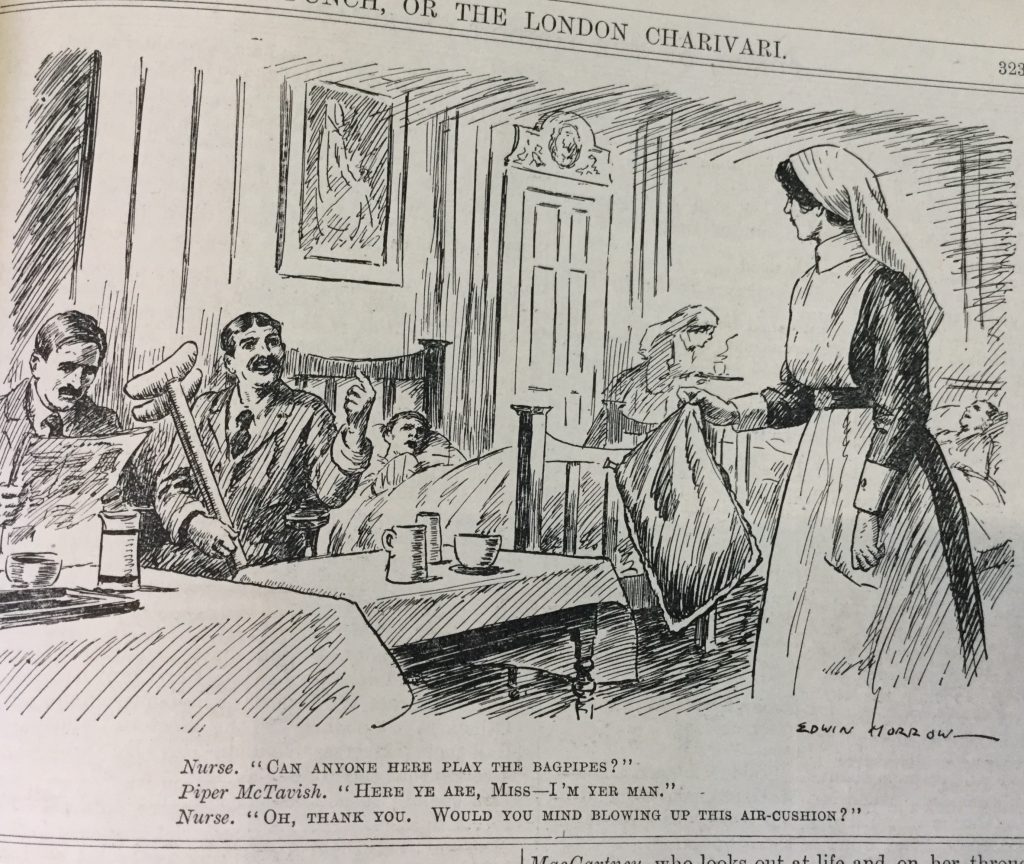
A hundred years on from the Battle of the Somme much has changed in the technology of news reporting; but the power of words and images is still as potent as ever.
Additional information
*Reuters
Reuters was founded by Paul Julius Reuter, who used the new telegraphic service to send information to newspapers. Reuters became one of the first news agencies and today they are still supplying information to the news media worldwide.
**Electric Telegraph
The electronic telegraph was first developed in the mid C19th. It used a system of overland wires and transatlantic and cross- Channel cables to transmit messages electronically between telegraph stations. This was invaluable for newspapers as it gave them access to up-to-date news and information and meant that they didn’t have to have the expense of numerous foreign correspondents. The phrase “over the wire” originates from the days of the telegraph, and the Daily Telegraph gets it name from it too.
Bibliography
The Illustrated London News
The Information and Reference Library holds the Illustrated London News from 1842 to 2003.
Some volumes are on microfilm and can be read on our microfilm reader.
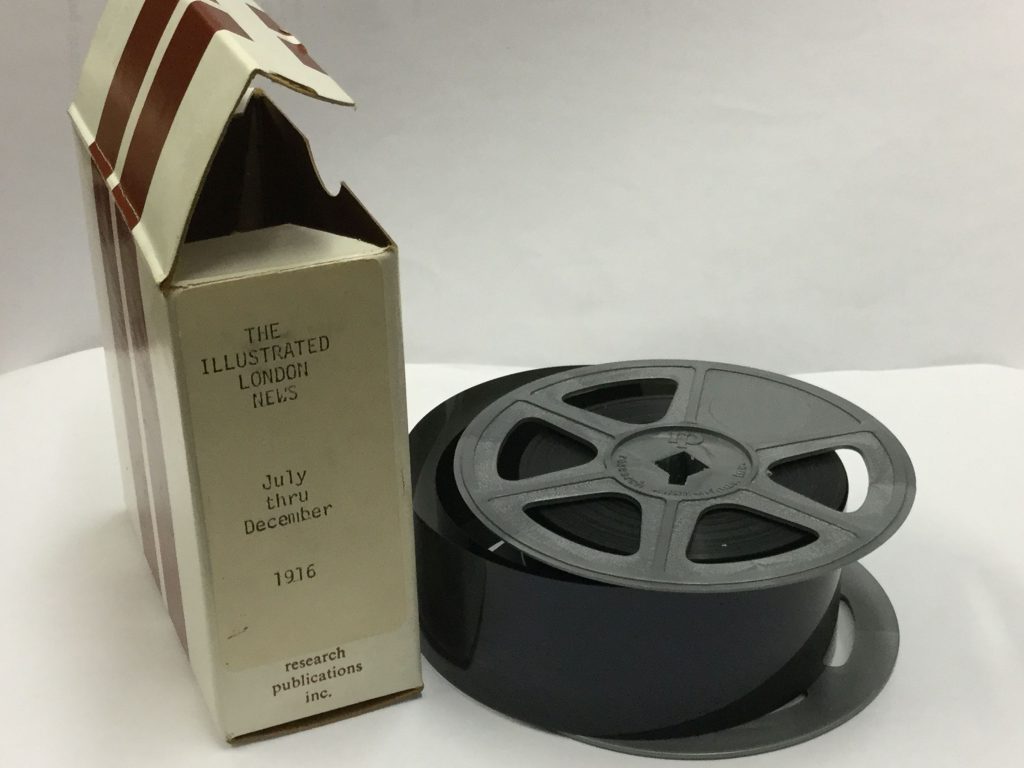
Penrose Annual 1974 This edition has an article about the Illustrated London News
Punch
The Times is available in hard copy and kept for 6 months. Library members may access earlier issues online via Newsbank and The Times Digital Archive.
The Western Front Companion
World War 1: A Student Encyclopedia
Related links and source material
Article on telegraphy from Encylopaedia Britannica
BBC timeline of the Somme
History of Punch
The Telegraph Museum
Library members can access the entries in Oxford Dictionary of National Biography by clicking on the hyperlinks in the text.
[Fiona Campbell, Library Assistant]
